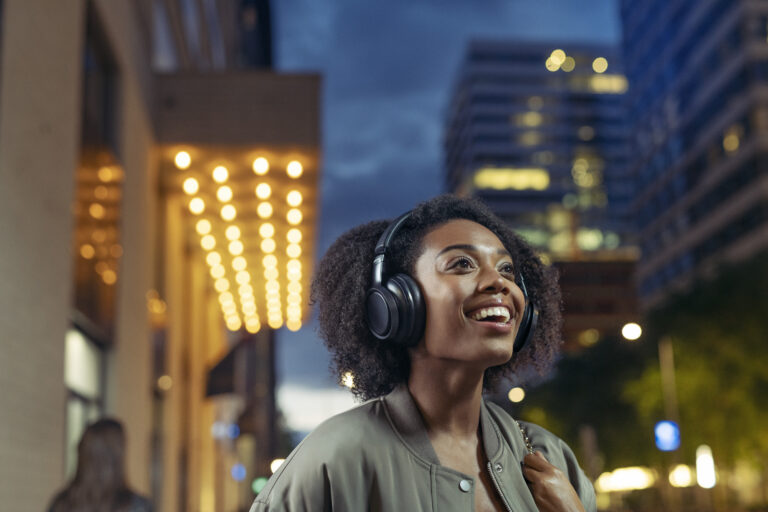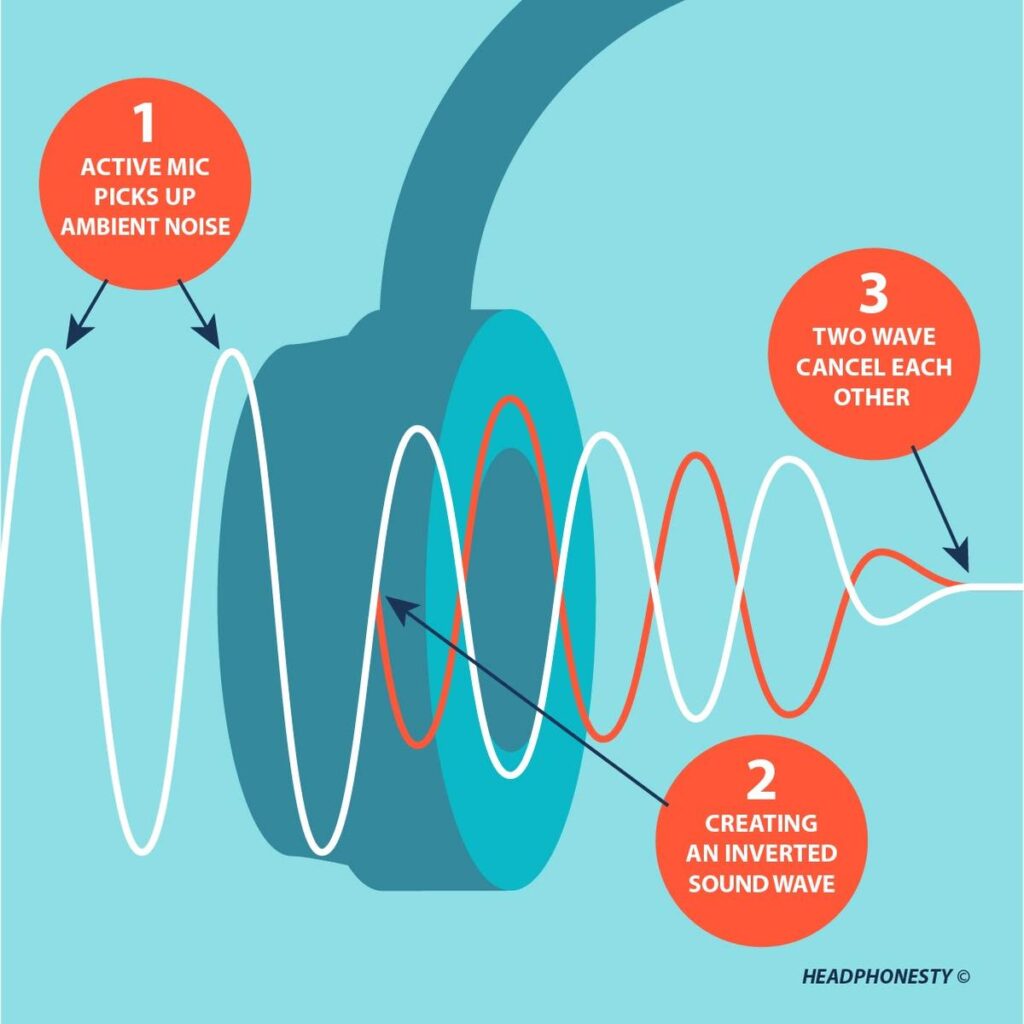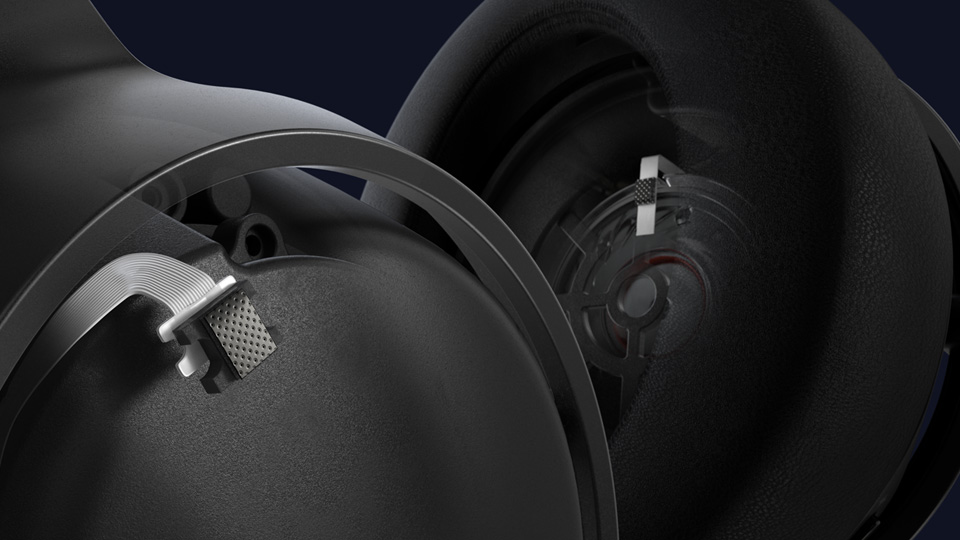
Modern life is busy, frenzied, chaotic, and most of all – loud. With notifications jumping out at you every 30 seconds, it’s almost impossible to find a moment of peace and quiet. Living amid all this din is exhausting, not to mention counterproductive. So it’s no wonder headphones have become something of a staple in today’s society.
But is covering your ears good enough? Noise cancellation is a term you’ll come across repeatedly if you’re shopping for headphones or earbuds these days. Since Bose released the first pair of consumer noise-canceling headphone in 2000, active noise cancellation (ANC) has become a common feature in the audiophile world, especially among industry leaders like Bose, Philips, and Sony. In this article, we’re going to explain how ANC headphones work and why they’re so popular.
Why does ANC Matter?
Because you’re on an extremely important phone call. Or you’re trying to listen to your favorite podcast on the crowded subway. But at the end of the day, it’s way more than that. Research has found that long-term exposure to noise can lead to sleep disorders, mental health issues, and an increased risk of a heart attack. In fact, studies show that adverse effects on the human body start at just 65dB, a sound level barely louder than the steady hum of a refrigerator (40dB), and the buzz of an open plan office (60dB).
In 2017, The Guardian published an article calling noise-canceling headphones “the secret survival tool for modern life.” In the interview, multiple people profess that they use the silencing feature on a day-to-day basis, and not just for music.
“HAVING A LOT OF BACKGROUND NOISE WHEN YOU’RE DOING SOMETHING IS TIRING. WITHOUT NOTICING, YOU’RE PUTTING IN A LOT MORE EFFORT IN ORDER TO BLOCK OUT THE NOISE. SO WHEN YOU SHUT IT OUT, THERE’S A SENSE OF RELIEF.”
Stephen Stansfeld, Professor of Psychiatry at Queen Mary University of London
Passive Noise Isolation vs. Active Noise Cancelation (ANC)
The first thing you need to know about noise-canceling is the difference between passive and active. Passive noise cancellation, or noise isolation, is more of a marketing term than anything else, since there’s no genuine technology behind it. Instead, passive noise-canceling headphones use custom-fitted ear cups or sound-isolating material to prevent ambient noise from entering your ear canal.
Active noise-canceling headphones, on the other hand, are much more sophisticated. In a nutshell, ANC systems uses microphones and speakers to detect sounds from the environment, then create inverting signals, or “anti-noise” to counter and reduce them. If you find this process a wee bit complicated, just think of it in terms of math. When you put 2 and -2 together, they neutralize each other and make zero. The same goes for soundwaves with opposite phases and equal magnitude.
Since noises tend to sound very different from outside and inside the headphones, ANC systems are largely defined by the number of microphones involved, and where they are located. Next up, let’s dig deeper by looking into the three types of active noise-canceling methods: Feedforward, feedback and hybrid.

Feedforward Noise Cancellation
Here, the mic is placed outside the ear cup, and can therefore pick up surrounding sounds before your ears do. The digital signal processor then goes on to produce anti-sound, which cancels out the ambient noise and leaves you with the sounds you desire. This type of ANC system is arguably the simplest and most straightforward. The mic can detect external noises early on, and typically does better with higher-frequency noise. However, the signal mapping is not as accurate as placing a mic inside the ear cup. If the headset is too loose, or if the noise is coming from an unusual angle, these unwanted sounds may even end up getting amplified instead.
Advantages
- The external mic is faster at picking up and responding to ambient noise
- Better at blocking out high frequency noises
Disadvantages
- Lower audio fidelity
- Covers a narrower range of frequencies
- Unable to self-correct
- More sensitive to wind noise
- Sound quality may be affected by the way the headphones are worn
Feedback Noise Cancelation
Feedback ANC is the opposite of feedforward. The major benefit of having an internal mic is that it can hear the signal exactly the same way as the listener does, regardless of the exact positioning of the headphones. Feedback ANC is also more resistant to wind howl and does better at reducing low-frequency noises. The downside is that it can’t deal as well with loud noises and higher-frequency sounds. And since the ANC chip treats incoming music along with the noise, you might lose certain elements of your favorite tune if designers aren’t careful.
Advantages
- Works on a broader range of frequencies
- Can adapt better to variations in sound and self-correct if needed
- More effective if the headphones are not worn correctly
Disadvantages
- Doesn’t do well with higher-frequency sounds
- ANC can accidentally filter out the sound waves of the intended audio if the processing circuits are not designed properly
Hybrid Active Noise Cancelation
Hybrid ANC utilizes both feedforward and feedback microphones to get the best of both worlds. This combination delivers the best sound frequency coverage and the least feedback issues. It can also adapt to and correct errors. Unfortunately, this type of headphones are also the most expensive.
Advantages
- With two mics, the ANC algorithm can react faster and more accurately
- Covers more frequencies across the spectrum
- Optimal sound quality
Disadvantages
- More expensive
What Type Should you Go For?
There is no clear-cut answer to this question. It depends on your lifestyle, what you value the most, and of course, how much you’re willing to pay. For instance, if you’re an audiophile who cares a lot about sound quality, you may want to invest in a pair of hybrid ANC headphones, like Sony WH-1000XM4 or the upcoming Philips Fidelio L3.

But be aware. Even the latest, shiniest, state-of-the-art ANC headphones can’t eliminate 100% of the surrounding noise. Some sounds, especially sudden bursts of high-frequency noises, like your neighbor’s car honking, may still penetrate the defenses. And ANC alone doesn’t determine overall sound quality, other factors need to be taken into account as well, such as size, design, material, and so on. The trick is finding the right pair of headphones that best suit your everyday needs.
Wrapping up…
Not everybody may need an active noise-canceling switch in their lives. But owning a pair of ANC headphones, and knowing the science behind this technology, will certainly help you navigate this loud, buzzing world with more confidence. God knows, it certainly helps if you’re halfway through a ten-hour flight, or working from home with three kids running around like crazy in the playroom next door.
